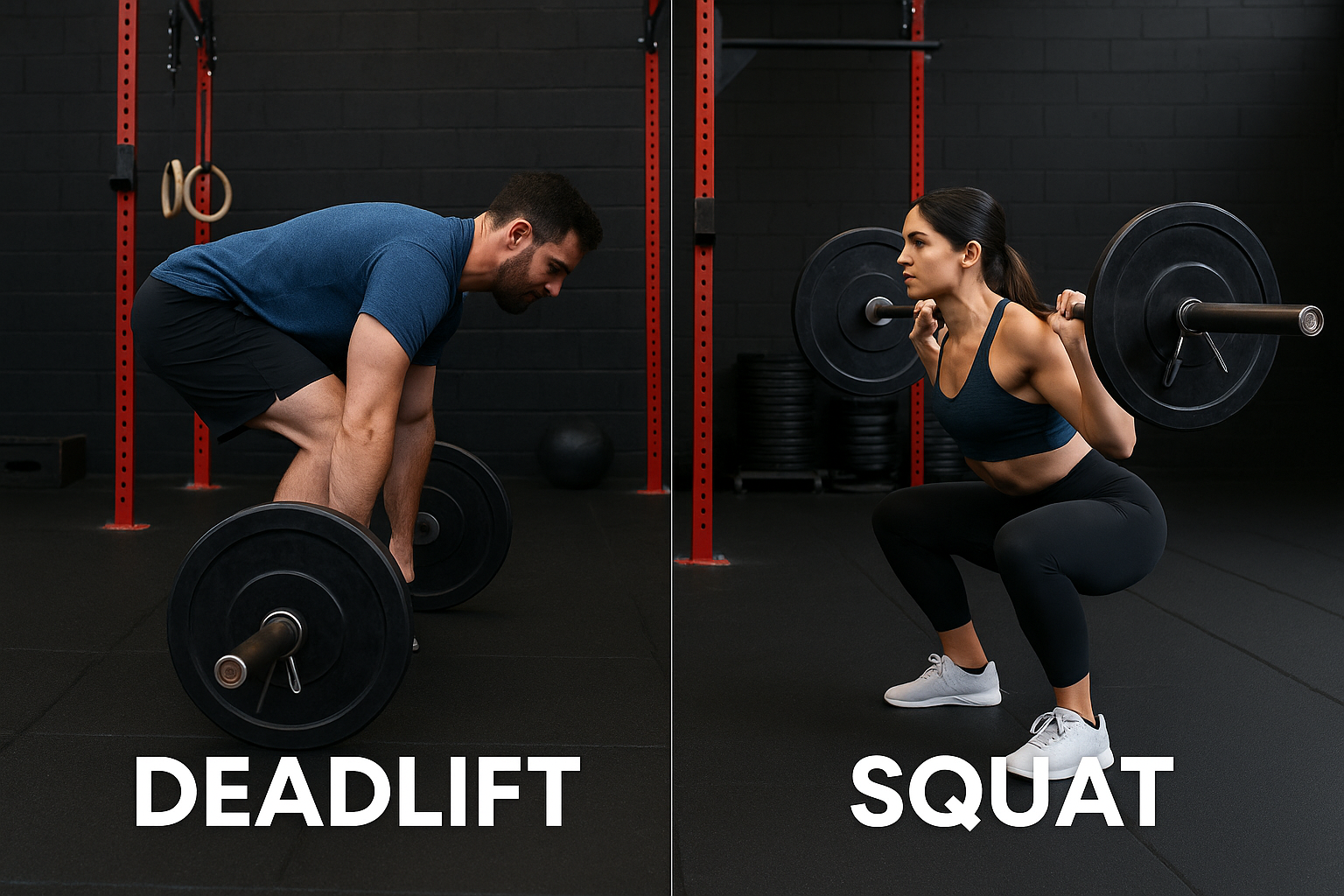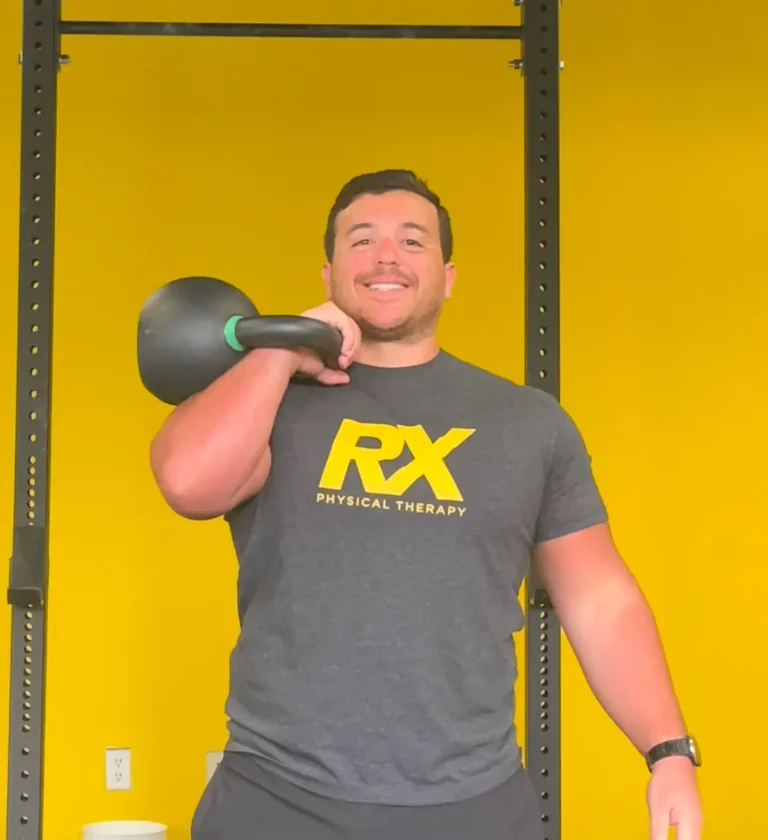If you’re a lifter dealing with back pain during deadlifts or squats, you’re not alone. These compound lifts are essential for building strength—but if your technique, mobility, or setup is off, your spine can suffer.
In this article, we’ll break down the specific causes of low back pain in both deadlifts and squats, how to assess the issue, and the best strategies to stay strong and pain-free.
🏋️♂️ Back Pain During Deadlifts: What’s Going Wrong?
1. Poor Hip Hinge Mechanics
Deadlifts require a proper hip hinge pattern. If you’re bending through your spine instead of your hips, your lumbar spine ends up doing the lifting—leading to fatigue, tightness, or even injury.
✅ Fix it:
- Practice with a dowel along your spine (3 points of contact: head, mid-back, tailbone)
- Load the hips back while keeping the spine neutral
2. Lack of Core Bracing
One of the most common causes of back pain in deadlifts is poor intra-abdominal pressure. If you’re not bracing your core effectively, your spine becomes the weak point under load.
✅ Fix it:
- Breathe into your belly and sides (360° expansion)
- Brace as if preparing to take a punch before lifting
3. Poor Bar Path and Setup
If the bar drifts forward or you start with hips too low or too high, your spine compensates. A poor setup leads to shear forces through the low back.
✅ Fix it:
- Start with the bar over midfoot
- Hips and shoulders should rise at the same rate during the lift
4. Limited Hamstring or Glute Strength
Weak posterior chain muscles = more work for your back. You need strong glutes and hamstrings to control the lift and protect your spine.
✅ Fix it:
- Add Romanian deadlifts, glute bridges, and Nordic curls
- Use tempo and pause reps to build control
✅ Deadlift Modifications for Back Pain
- Trap bar deadlifts: more upright torso = less stress on spine
- Sumo deadlifts: wider stance, shorter range of motion
- Block pulls or rack pulls: reduce depth while reinforcing hinge mechanics
🏋️♀️ Back Pain During Squats: What Lifters Should Watch Out For
1. Butt Wink or Lumbar Rounding
“Butt wink” happens when your pelvis tucks under at the bottom of the squat, causing your lower back to round. This puts your spine in a vulnerable position under load.
✅ Fix it:
- Limit range of motion to just above where the pelvis tucks
- Improve hip and ankle mobility with deep squat holds and 90/90 flows
2. Forward Lean and Excessive Spinal Load
A squat that turns into a good morning places excessive shear force on the lumbar spine.
✅ Fix it:
- Strengthen upper back and core to maintain a more upright torso
- Try front squats or goblet squats to reinforce proper posture
3. Poor Bracing and Core Control
Just like in deadlifts, poor bracing in squats is a major contributor to low back pain. If your core collapses under load, your spine will take on unnecessary stress.
✅ Fix it:
- Focus on a strong brace before every rep
- Use cues like “ribs down” and “stacked spine”
4. Limited Hip or Ankle Mobility
If your ankles can’t dorsiflex enough, your body shifts the load backward, forcing you to overextend your spine. Tight hips also prevent smooth descent, leading to compensations.
✅ Fix it:
- Add ankle rocks, hip flexor mobility, and deep breathing in squat holds
- Elevate heels with small plates or weightlifting shoes if needed
✅ Squat Modifications for Back Pain
- Box squats: control depth and reinforce posterior chain engagement
- Goblet squats: promote an upright torso and better core activation
- Widen stance slightly to reduce joint strain and find a more comfortable depth
🚨 When to Seek Help
If you’re dealing with:
- Pain that radiates into the glutes or legs
- Tingling, numbness, or weakness
- Pain that doesn’t improve with modifications
…it’s time to work with a professional. These could indicate disc involvement or nerve irritation.
✅ Proactive Tips to Prevent Back Pain
- Use a dynamic warm-up to prep hips, spine, and core
- Start each lift with intentional core bracing and breath control
- Film your lifts and watch for signs of form breakdown
- Avoid chasing load at the expense of technique
- Stay consistent with mobility and accessory strength work
🧠 Bottom Line: You Don’t Have to Choose Between Lifting and a Healthy Back
Deadlifts and squats can strengthen your spine and bulletproof your body—if done well. Whether your issue is poor form, mobility limits, or bracing breakdown, there’s almost always a solution.
If you’re struggling to figure out why your back hurts when you lift, we’re here to help.
📍Need a Form Check or Custom Fix?
At RX Physical Therapy, we help lifters resolve back pain, improve technique, and get stronger without setbacks. Book a 1-on-1 movement screen and learn how to fix your pain and maximize performance. Schedule a time for a call here.


